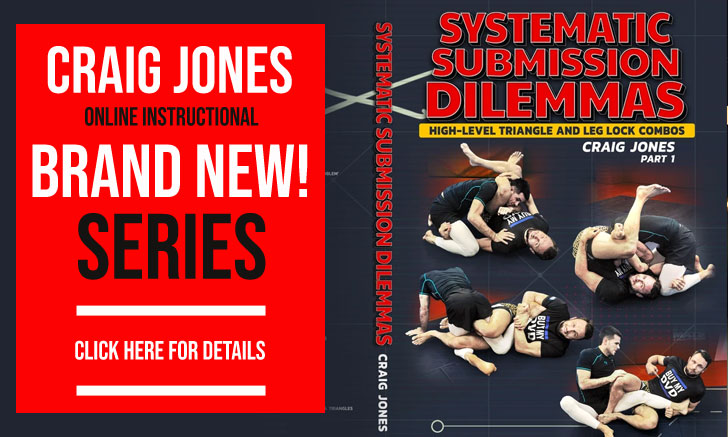Although he only just turned 22 years of age, Matheus Gabriel is already regarded as a unique athlete in our sport, owning a few important landmarks in his division.
Matheus was jiu-jitsu’s first featherweight athlete to win the World title in sequential years at brown and black belt. Also, while making his debut campaign in the upper echelon of jiu-jitsu this year, the Checkmat standout conquered both the World and Pan Championships with the IBJJF, our sport’s most prestigious gi tournaments. What many fans may not know is that this is also a record in the division. Never before had a featherweight black belt debutant competitor conquered both of these titles. The cherry on top was Gabriel’s submission in the final of the World Championship against Márcio André – we hadn’t seen a sub end a featherweight “worlds” final since 2008 (Cobrinha vs Frazatto).
Despite all these incredible accomplishments, Matheus is not particularly backed by an army of fans, nor is he a regular face in our sport’s main media outlets. Traditionally gi fans tend to be less vociferous than their nogi counterparts, but much of this is also down to Matheus Gabriel’s own demeanor. He is training to be the best, all other distractions do not matter: “I left home very early in search of my dream [14 years old]. My focus has always been unbreakable, back then I was already training 7 days per week, Monday to Sunday. This is my motto – ‘while others are having fun, I am working” said Gabriel to BJJ Heroes earlier this week.
To have a clearer idea of Gabriel’s mindset, while a few athletes are vocal about the middle-class hardships they endured while trying to make it in this sport, few got close to the hardiness of Gabriel’s journey. A 14-year-old kid who traveled 2650 miles, by himself, in pursuit of a dream. Living among strangers on the mats of a (far from luxurious) training center in a Rio de Janeiro slum at Márcio Rodrigues‘ project.
From then to the present day, much has passed and Matheus is now one of BJJ’s finest representatives. This year, although incredibly successful, he was not as active as he had been during his colored belt years, we enquired Gabriel about this slowing of pace. Was it strategic? Gabriel replied: “Up until black belt I fought in everything. My coach always said ‘you need to make winning part of your routine’, so I used smaller tournaments to develop other areas of my jiu-jitsu. I would compete everywhere: Fight 2 Win, NAGA, Newbreed, JJWL, FIVE, everything.” But the strategy changed for his black belt debut “I got my black belt on the podium when I conquered the worlds at brown belt. There were still 5 or 6 months before I was allowed to compete at black belt, as per IBJJF guidelines, but this was my coach’s plan. He thought it was better for me to prepare for the black belts ahead by training with all the black belts [at the team’s headquarters in LA]. I had already won the worlds in Gi and NoGi at brown belt, I didn’t need to go prove anything anymore in that division.” He continued. “To be honest, since I moved to Los Angeles [Checkmat HQ] from Dallas I started training every day with high-level black belts – Lucas Leite, Buchecha, Panza, Leozinho, Jack, Arnaldino, etc. Not to mention all this new generation of world champs from the lower belt levels. I don’t really need to compete all the time, every training session is a worlds final [laughs]”.
One of the big question marks regarding Matheus Gabriel’s first ADCC tournament is his lack of experience under this ruleset or under the NoGi setting over the past few months. Matheus addressed the issue: “I was fully focussed on winning the Pan and World Championships, this was my goal and I didn’t want to sway from that goal, train in different rules, none of that. NoGi has too many different rulesets and we need to strategize accordingly so I stayed away“. And even though he is first and foremost a gi specialist, word on the Checkmat camp is that Gabriel is just as good, or even better without the pajamas. When asked, Gabriel takes the humble route “I am still learning the game, particularly all this leg game and heel-hooks, but I have 11 matches and 4 belts at Fight 2 Win, and they are a submission-only promotion, so I’ve been exposed to a few of these games. My goal is to finish, always.”
When asked about who are the key players in the division, Matheus Gabriel seemed unphased: “everyone that made it there is tough, former podium placers particularly as they carry with them a lot of experience at this event“, this sentiment was also felt when asked about his ambitions for the ADCC event: “I am doing overtime over here, I just arrived [to the pro division] and above everything, I am looking to evolve. I was planning to rest my body for the nogi worlds, do a seminar tour and rest. The last few years have been very hard on my body, but since I got the invitation already, and it has been a dream of mine to be at that stage, I didn’t resist and got back to training.”
On the list of best featherweight debuts of all time, Matheus leads the way. Rafa Mendes had two bronze medals at Worlds and Pans as well as one gold that year at the ADCC. Cobrinha conquered “just” the world title, not making his ADCC debut until his 3rd year at black belt. If Matheus Gabriel wins this year’s ADCC, he could be catapulted not only for the best featherweight debut of all time but maybe the best debut period. One more reason to keep your eyes peeled at this year’s event.















